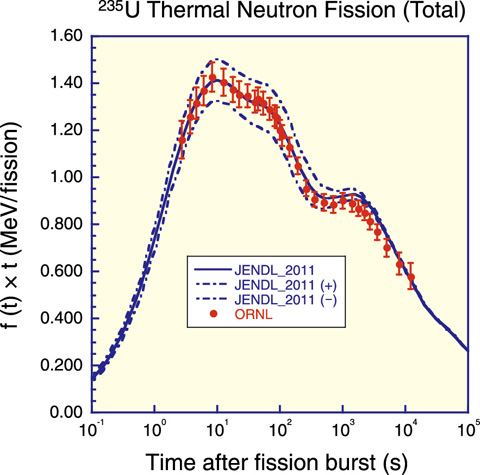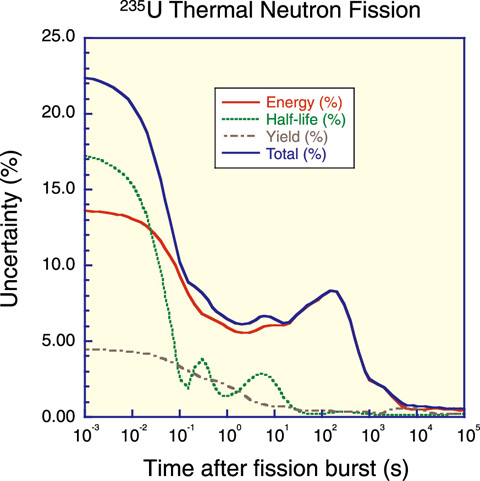
Fig.8-9 Decay heat from 235U thermal neutron fission

Fig.8-10 Origins of error for decay heat calculation
Many radio-isotopes (RIs) exist in nuclear reactors, even after they are shut down. These RIs emit radiation, which changes into decay heat. Most of these RIs are fission products (FPs), which are produced from fission reactions of uranium (U) and plutonium (Pu). There are more than 1000 FP nuclides, including isotopes with very short lives. To estimate FP production rates and decay heat, nuclear data such as the half-lives, emission energies of radiation, FP yields (FPYs, the ratio of FP produced per fission reaction) are necessary. The databases that can be used for decay heat calculations of spent nuclear fuels are JENDL (Japanese Evaluated Nuclear Data Library) FP Decay Data File 2011 (JENDL/FPD-2011) and JENDL Fission Yields Data File 2011 (JENDL/FPY-2011). JENDL/FPD-2011 includes the FP half-lives, emission energies of radiation, and intensities. The FPYs for many fission reaction systems are contained in JENDL/FPY-2011. These databases were produced with the latest knowledge as well as error data, which are the first in the world.
The decay heat of a 235U fission burst with thermal neutron vs. the decay time is shown in Fig.8-9. The calculated result reproduces the experimental data well at shorter periods, and the error region covers almost all of them. Fig.8-10 indicates the origin of the error. Overall, the error arising from the emission energies of radiation from decaying FPs is dominant.
The reactor decay heat has been investigated since the very early stage of peaceful nuclear power use. Although an empirical equation based on experimental data was used at that time, the summation method, which accumulates the independent contribution of each FP nuclide, has been developed. Some decay data have been unclear, since considering FPs should consist of more than 1000 nuclides. With the development of the database and summation method, the accuracy and reliability of decay heat calculations are expected to be greatly improved.